Also known as the mossy mazegill, the mossy maze polypore (Cerrena unicolor) has a unique appearance that sets it apart from other similar species. The mossy maze polypore sometimes gets mistaken for the much sought-after turkey tail mushroom simply because it is also a small bracket fungus that grows on decaying wood. However, its maze-like patterns and mossy texture easily differentiate it with closer inspection.
- Scientific Name: Cerrena unicolor
- Common Names: Mossy Maze Polypore, Unicorn Polypore
- Habitat: Dead and decaying hardwood
- Edibility: Inedible
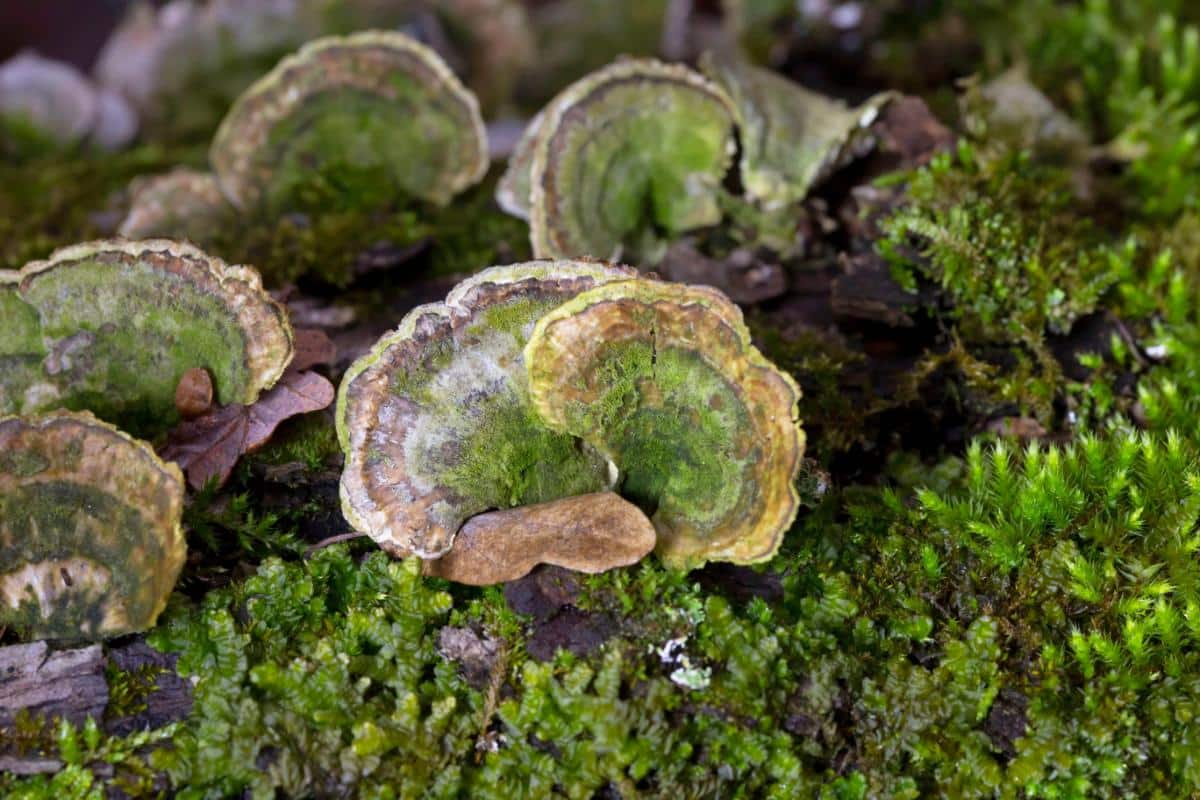
Jump to:
All About The Mossy Maze Polypore
French botanist Jean Bulliard first described this fungus in 1785 as Boletus unicolor. Later, in 1903, American mycologist William Alphonso Murrill reclassified it under the genus Cerrena, establishing its current scientific name.
This species has numerous synonyms, including Coriolus unicolor, Daedalea unicolor, and Lenzites unicolor.
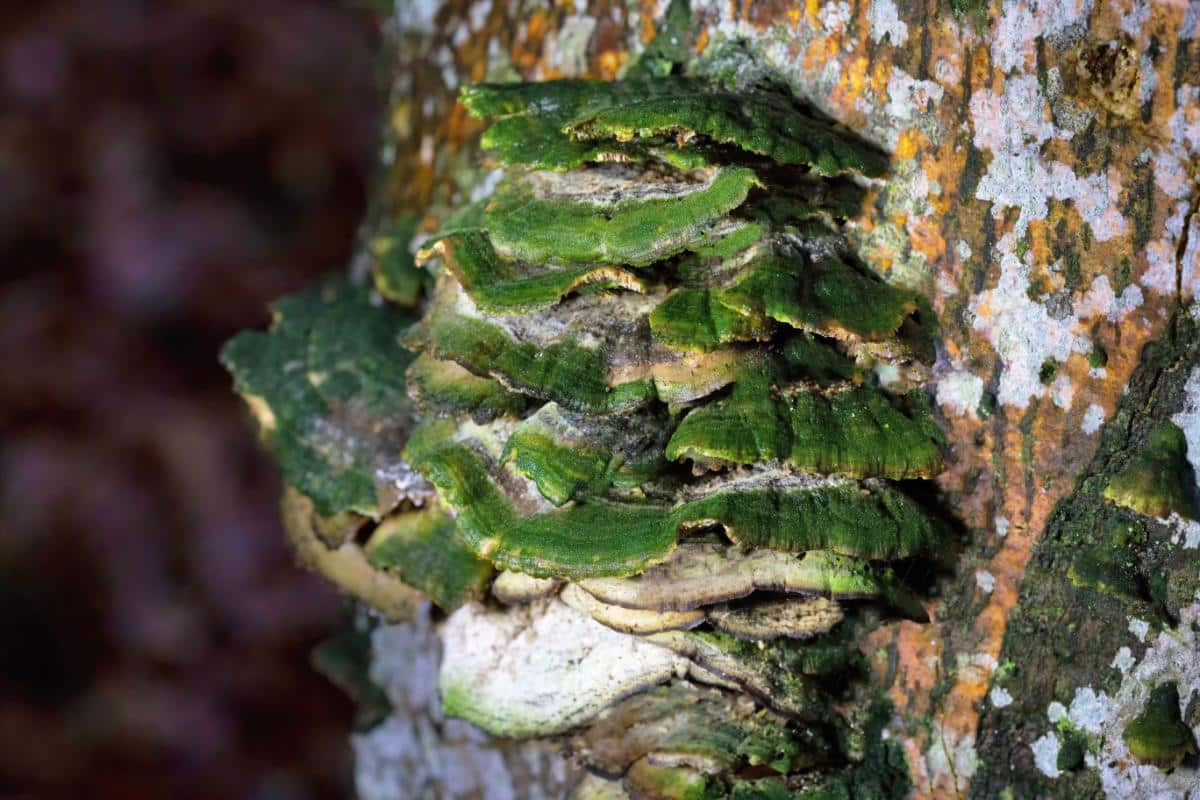
Mossy Maze Polypore Identification
Season
The fungus can be found year-round
Habitat
The mossy maze polypore prefers moist sites, especially along waterways. It grows on dead stumps, trunks, and branches of deciduous trees. It’s commonly found on maple, horse chestnut, and various hardwoods like birch, beech, and oak. It fruits in overlapping clusters on tree trunks and logs.
This mushroom causes extensive white rot. It breaks down dead wood and contributes to nutrient cycling, which is vital for forest health, as it helps release nutrients back into the soil.
It grows widely across North America but is uncommon to rare in the Southwest.
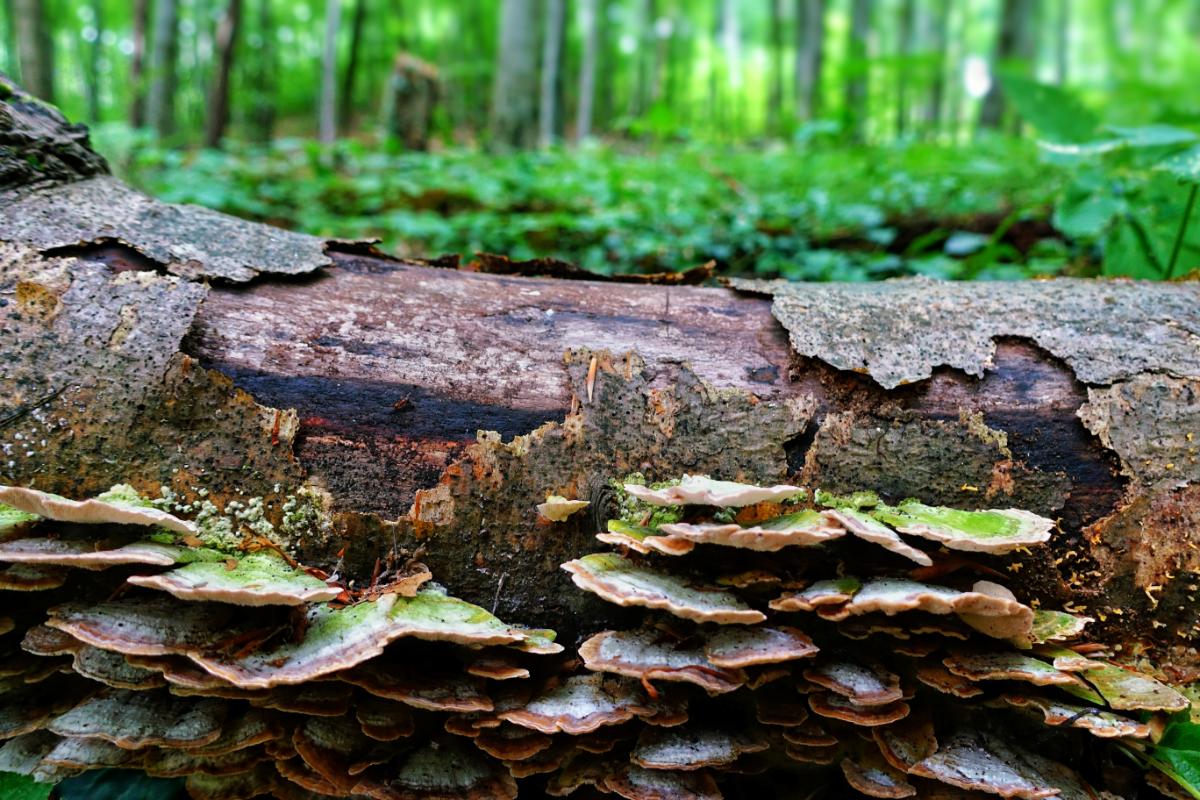
Identification
Cap
The mossy maze polypore has semicircular or kidney-shaped brackets measuring 1.2-4 inches across. These brackets often fruit prolifically, growing in groups of 2-20 and covering entire logs.
The upper surface of the mossy maze polypore is smooth and velvety, with a whitish to grayish-brown color. It often has concentric zones of texture or color. One of its most defining characteristics is the frequent presence of green algae on its surface, giving it a mossy appearance that inspired its common name.
Sometimes, caps don’t form at all, and the mushroom appears as a maze of pore surfaces across dead logs. More often, though, it does form its cap.
Pores
Young specimens have a whitish pore surface that turns gray as they mature. The pores form a maze-like or slotted pattern, eventually developing into tooth-like structures up to 4 mm deep.
Stem
This mushroom does not have a stem; it attaches directly to the wood.
Flesh
The flesh of the mossy maze polypore is white and tough. With age, it becomes brittle and breaks easily.
Spore Print
The spore print is white.
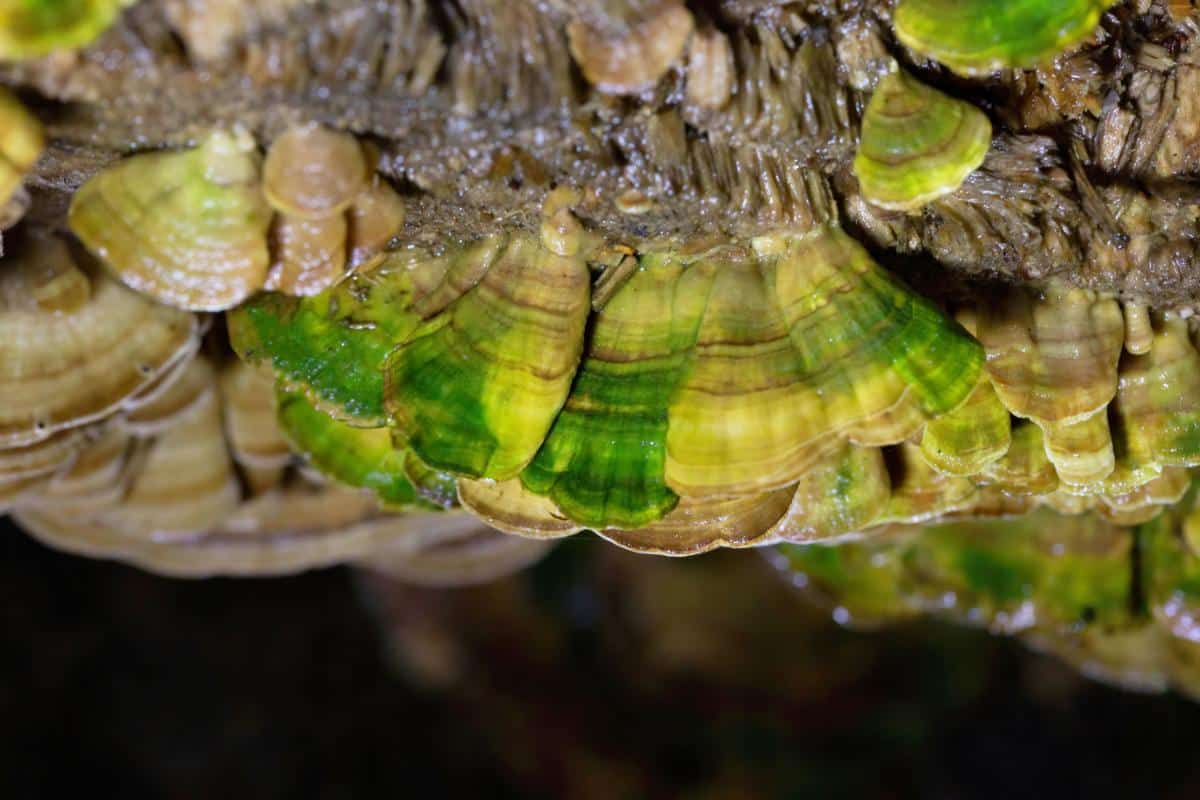
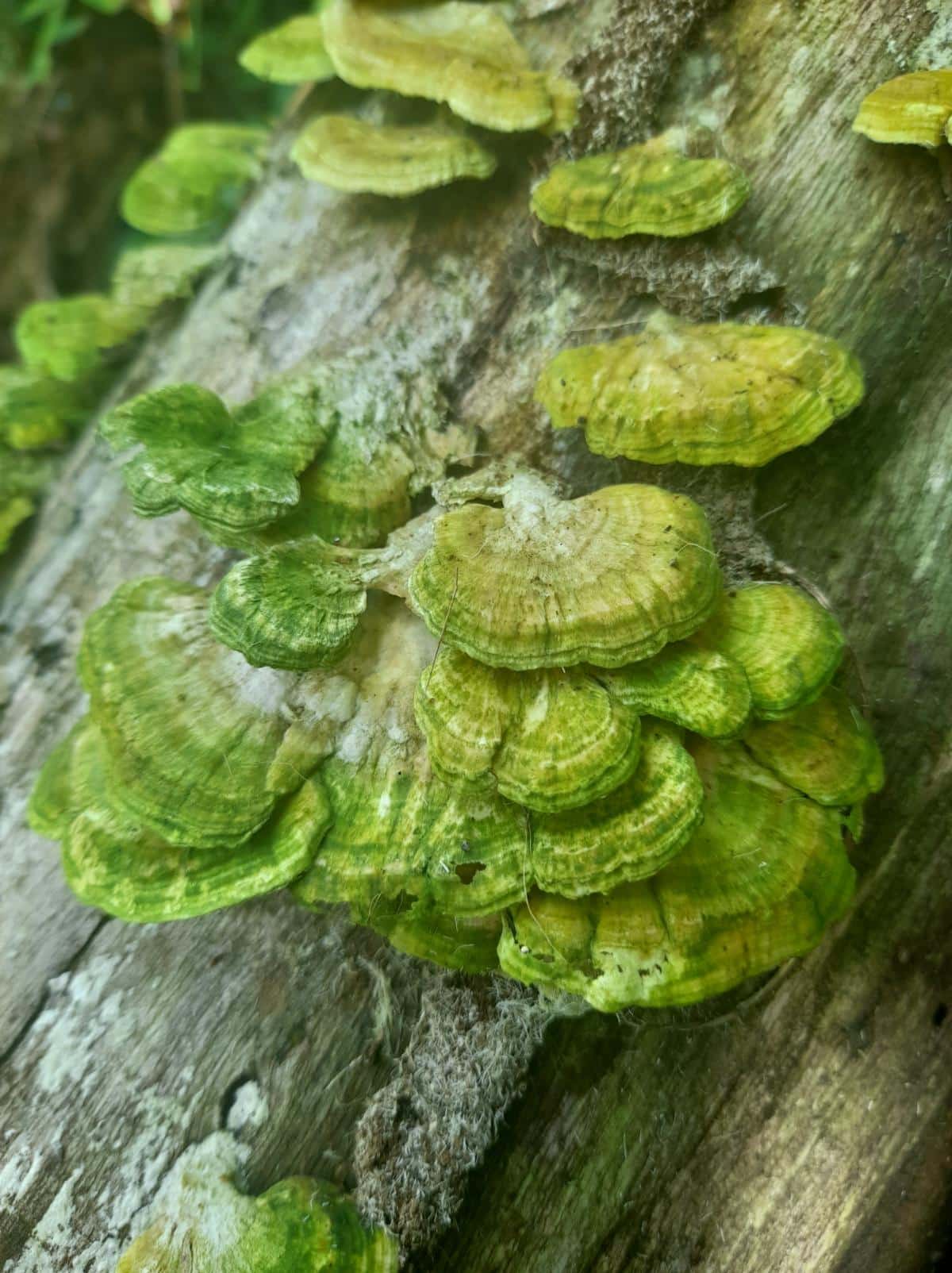
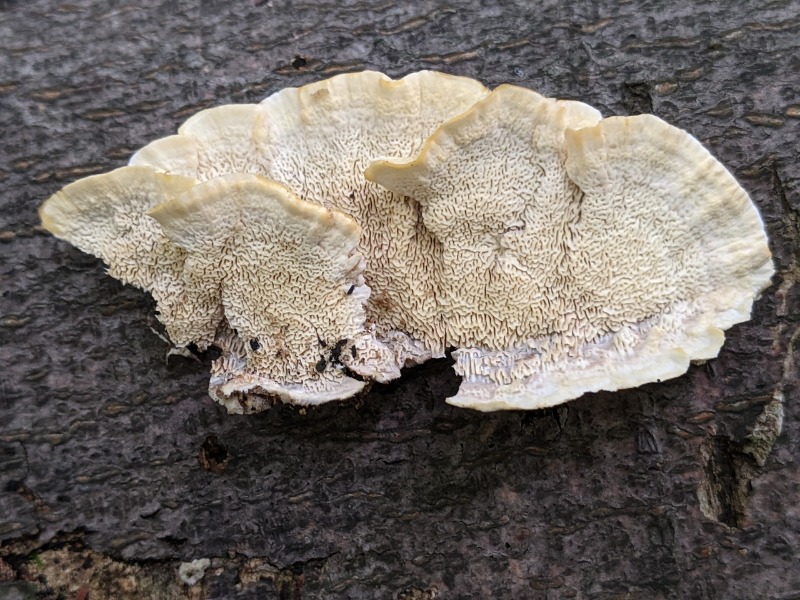
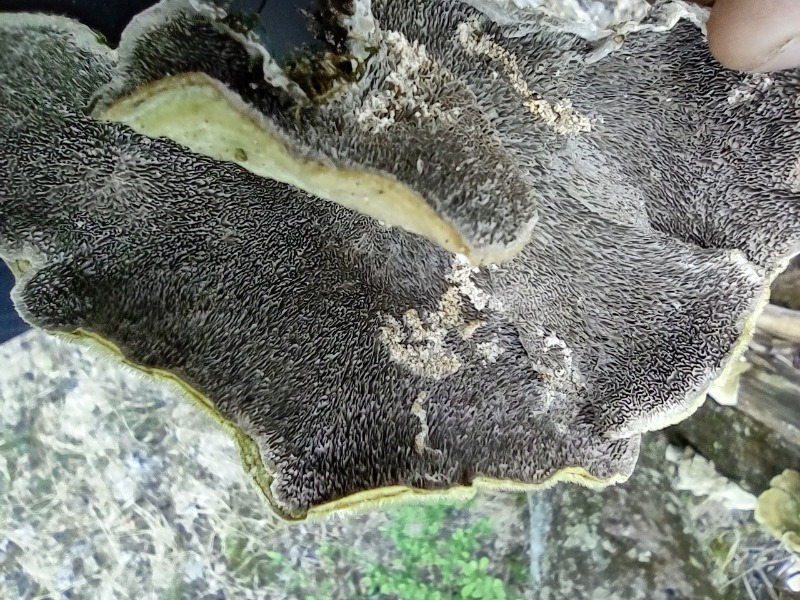
Mossy Maze Polypore Lookalikes
Turkey Tail (Trametes versicolor)
While they share some visual similarities, such as concentric zones of color, the turkey tail mushroom lacks the distinctive maze-like pore surface of the mossy maze polypore. The underside of the turkey tail is white with very tiny pores. Turkey tail flesh also remains flexible with age, unlike the mossy maze flesh, which gets brittle.
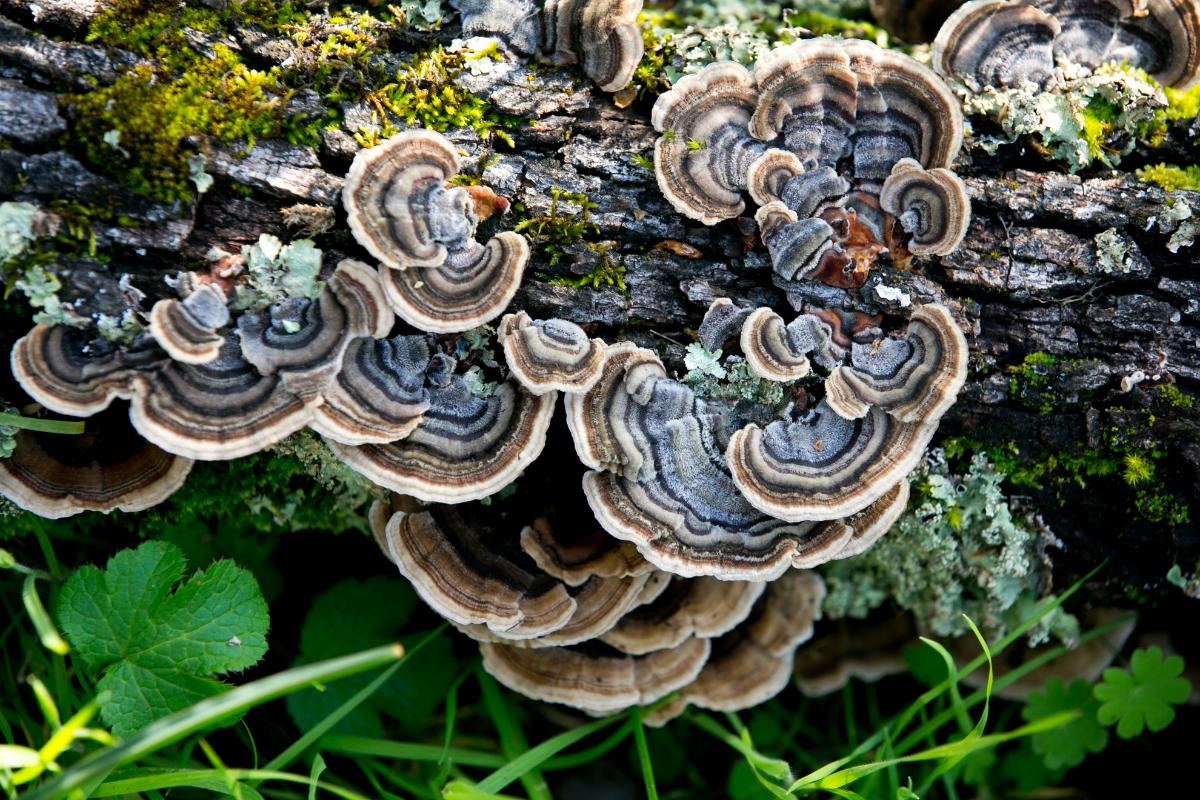
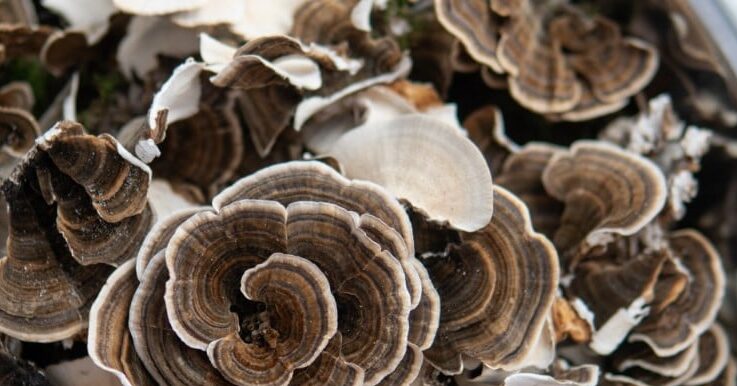
Lumpy Bracket (Trametes gibbosa)
The lumpy bracket polypore is a similar-looking mushroom that grows on hardwood and causes a white rot. Also, like the mossy maze, its cap surface is often covered in green algae. The underside of this mushroom may also look maze-like as the pores elongate with age. The primary difference between it and the mossy maze fungus is its lumpy cap.
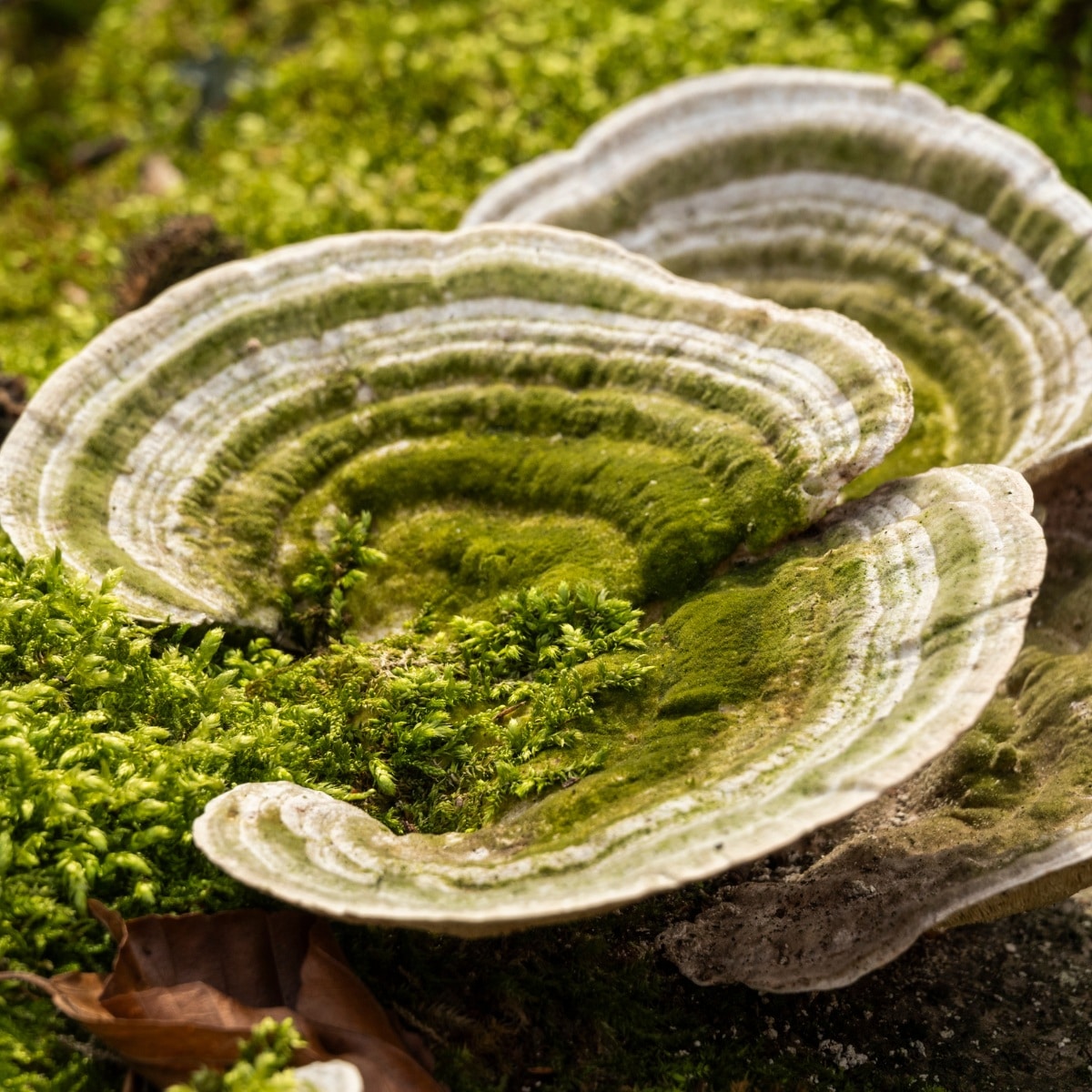
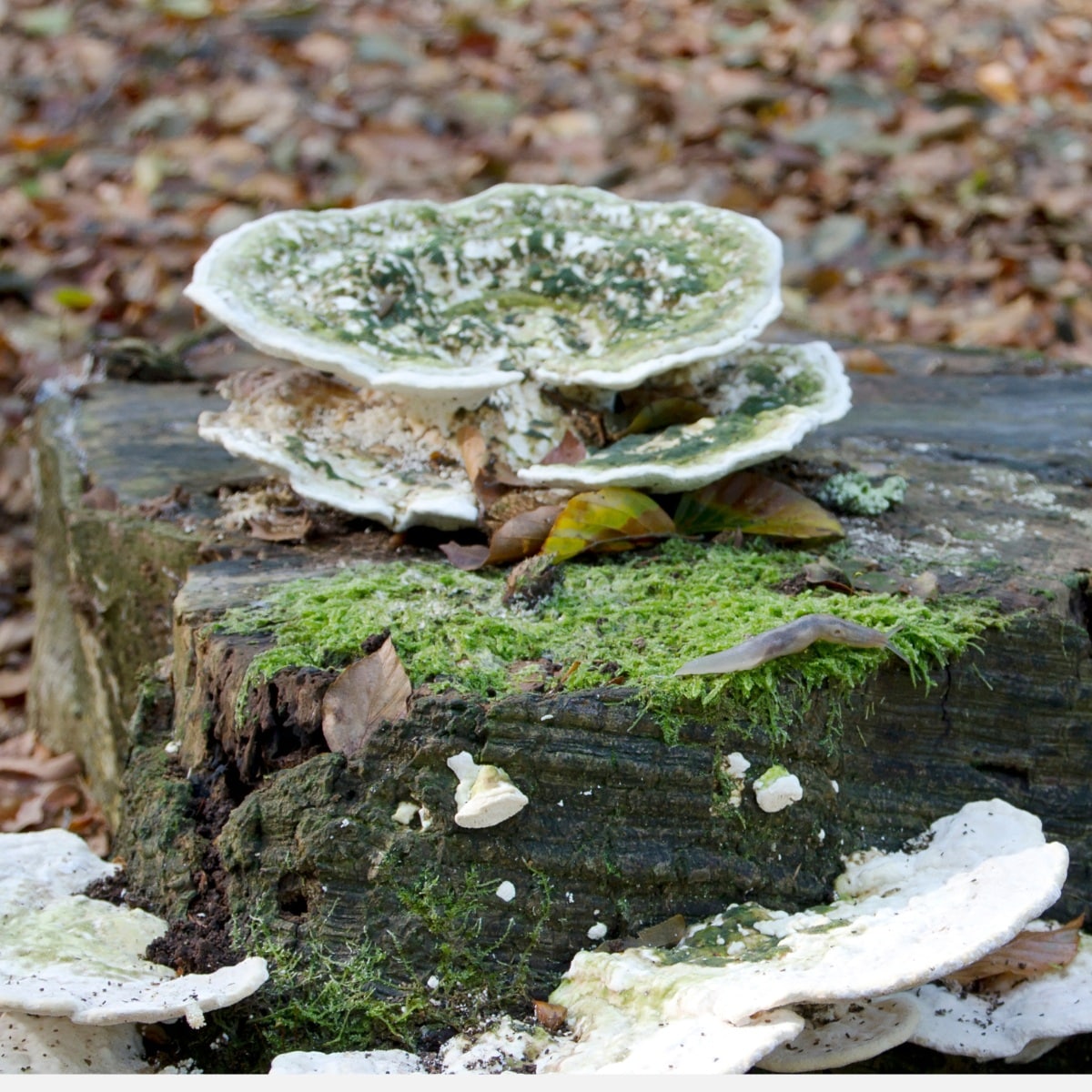
The Wild Story of the Mossy Maze Polypore And The Wasps
The mossy maze polypore has a unique relationship with two wasp species: Horntail Wasps (Tremex columba) and Ichneumonid Wasps (Megarhyssa spp.). The female horntail wasp drills into wood (usually dead or decaying) to test for suitable spots to deposit her eggs. As she does this, she might encounter the mossy maze spores if she is on wood infected with the fungus.
Her bore-ing tail, called an ovipositor, becomes covered in the mushroom’s spores. When she finds the right spot, she deposits her eggs and also the mossy maze polypore’s spores. The horntail wasp larvae then grow up in the wood hole and burrow into it, using the mossy maze mycelium and wood pulp as food. The mossy maze fungus spores are necessary for the horntail wasp larvae to develop successfully since they create the primary source of food.
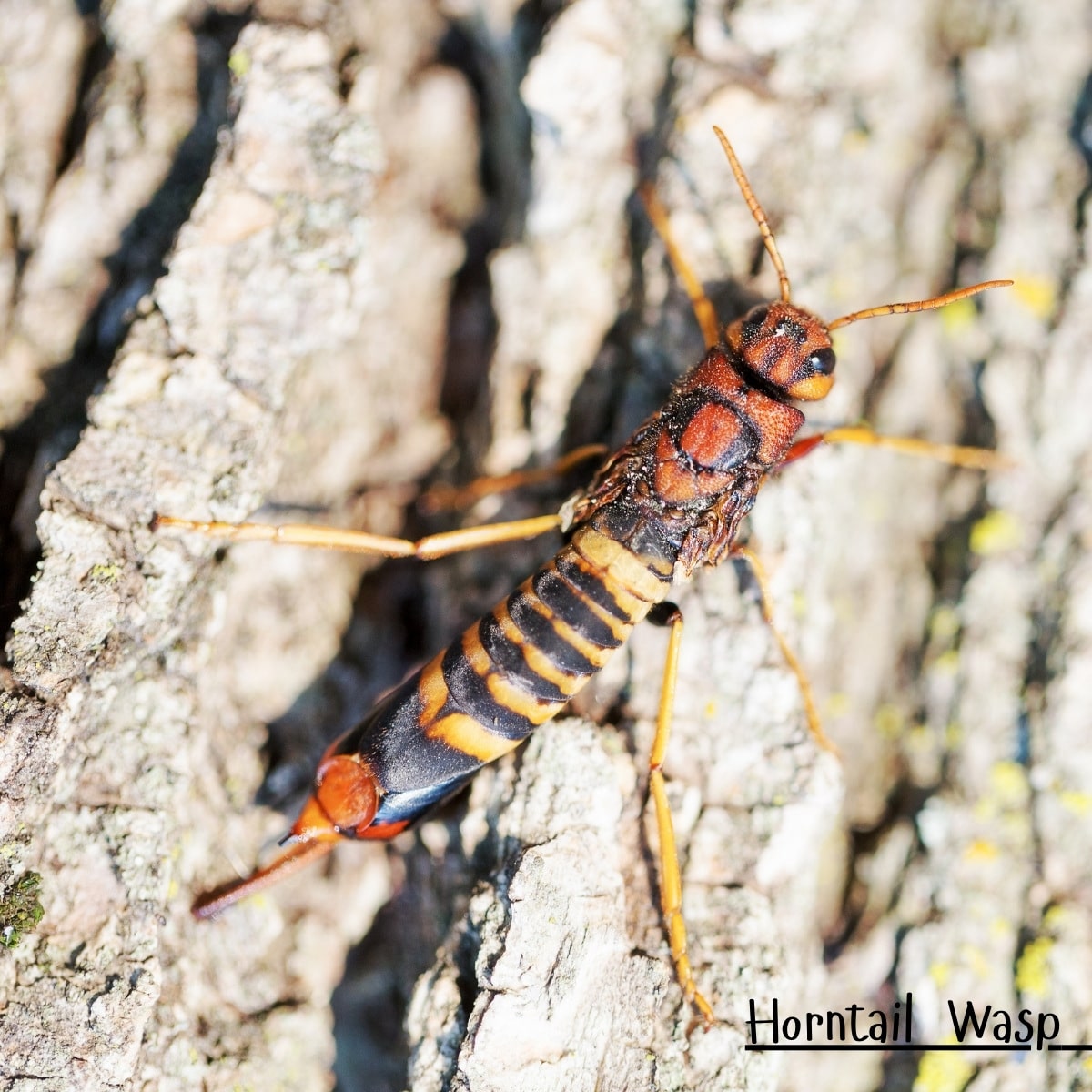
The larvae grow in the dead wood for the next year while the mushroom’s spores spread and decay the wood around it (remember, it is a white rot fungus).
Because a lot of dying wood is available to the horntail wasp, it can reproduce rather quickly, even though it takes a long time to pupate. Enter the Ichneumon wasp, a predator specific to the horntail wasp. It searches out the holes dug by the horntail and lays her own eggs on top of them. Some sources suggest the mossy maze polypore emits a pheromone that attracts the Ichneumon wasps. In the process of laying her eggs, the Ichneumon female stings the horntail wasp larvae and paralyzes them. The Ichneumon larvae then hatch and eat the paralyzed horntail wasp eggs.
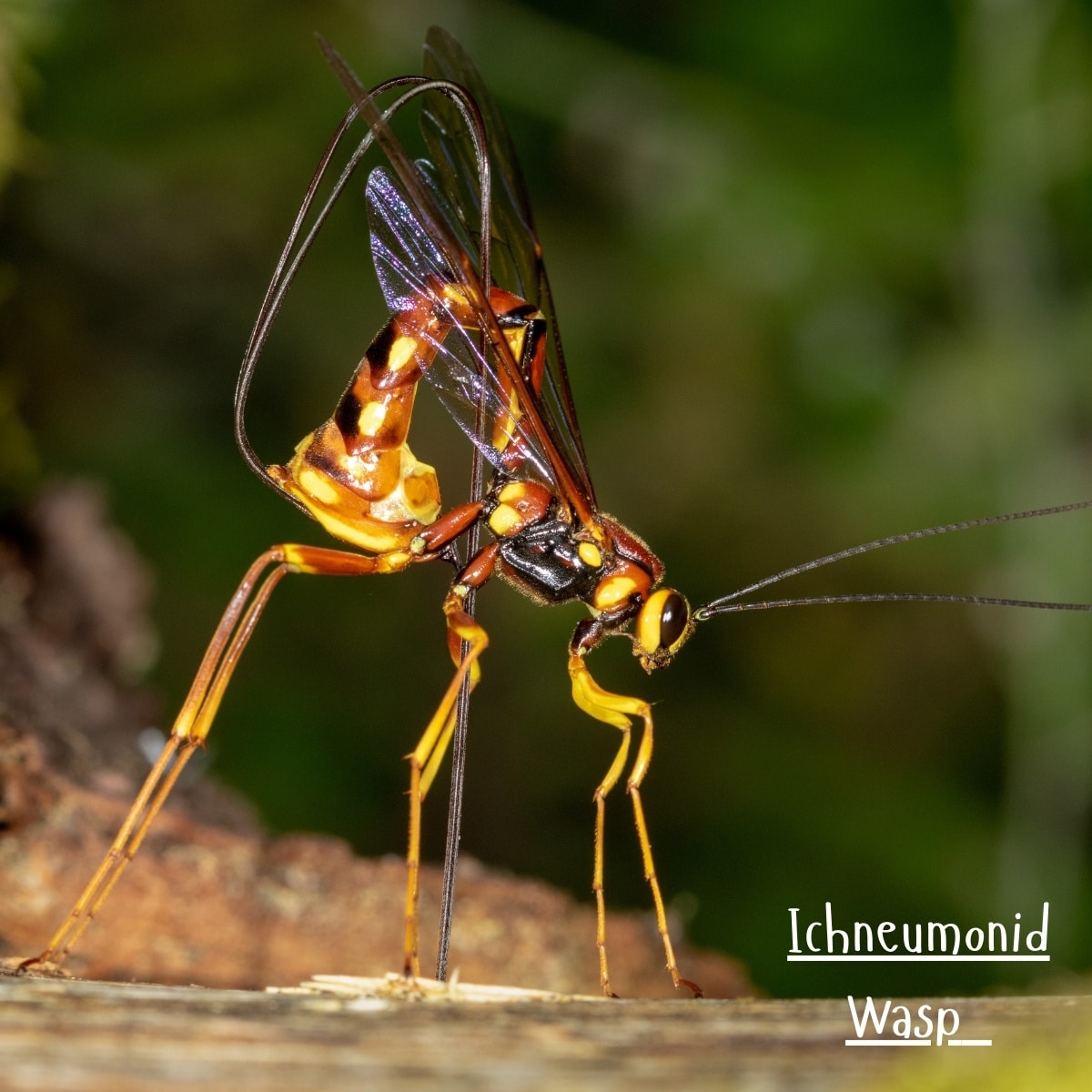
Mossy Maze Uses
Cerrena unicolor is a novel source of highly active extracellular laccase. Laccase is an enzyme that catalyzes the oxidation of various compounds, particularly phenols. This is significant because laccases have various industrial and biotechnological applications, including:
- Bioremediation (cleaning up environmental pollutants)
- Textile industry (for dye decolorization)
- Food industry (for beverage processing)
- Pulp and paper industry (for delignification)
- Cosmetics (for hair dyes)
The discovery of a new, highly active source of laccase could potentially lead to more efficient or cost-effective processes in these industries.
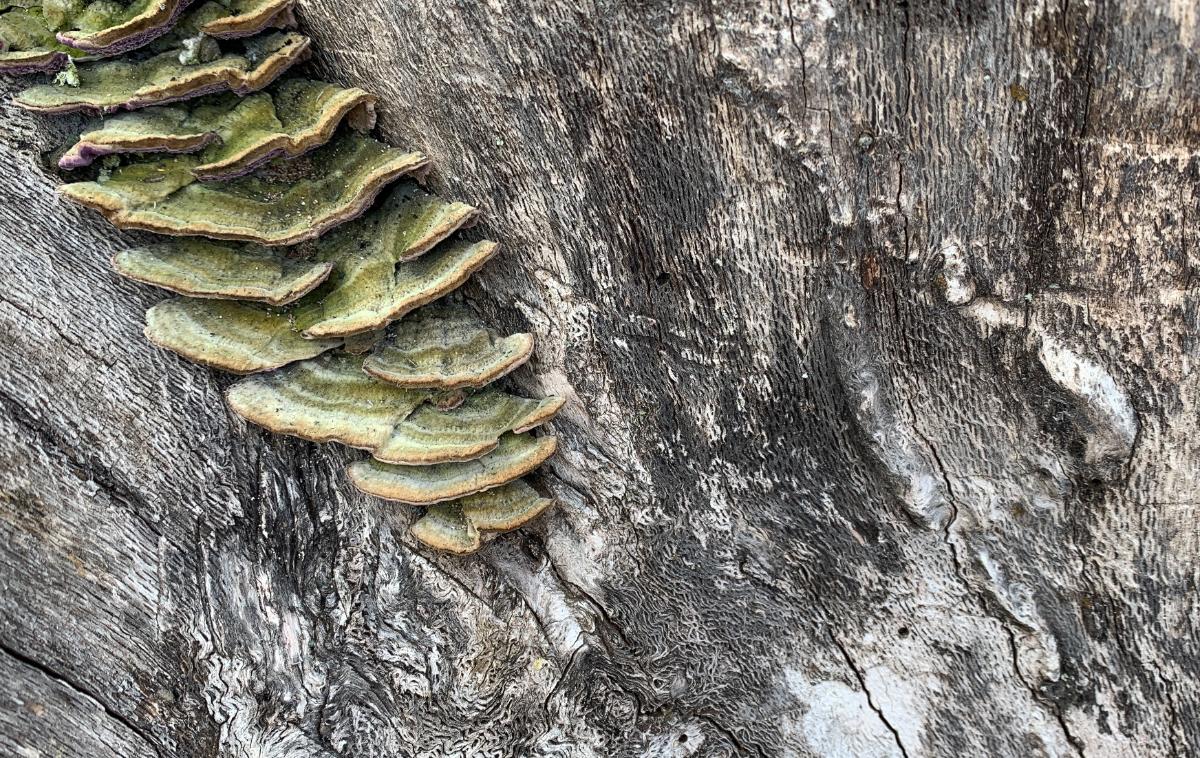
Common Questions About Mossy Maze Polypores
Can you eat Cerrena unicolor?
Cerrena unicolor, the mossy maze polypore, is not edible. However, it may have other uses because it produces the enzyme laccase more effectively and in greater quantities than other wood-rotting fungi under optimal conditions. Research is currently investigating developing cost-effective methods for large-scale laccase production.
Is the mossy maze polypore poisonous?
No, the mossy maze polypore (Cerrena unicolor) is not poisonous. It also isn’t edible because it is tough and unpalatable.
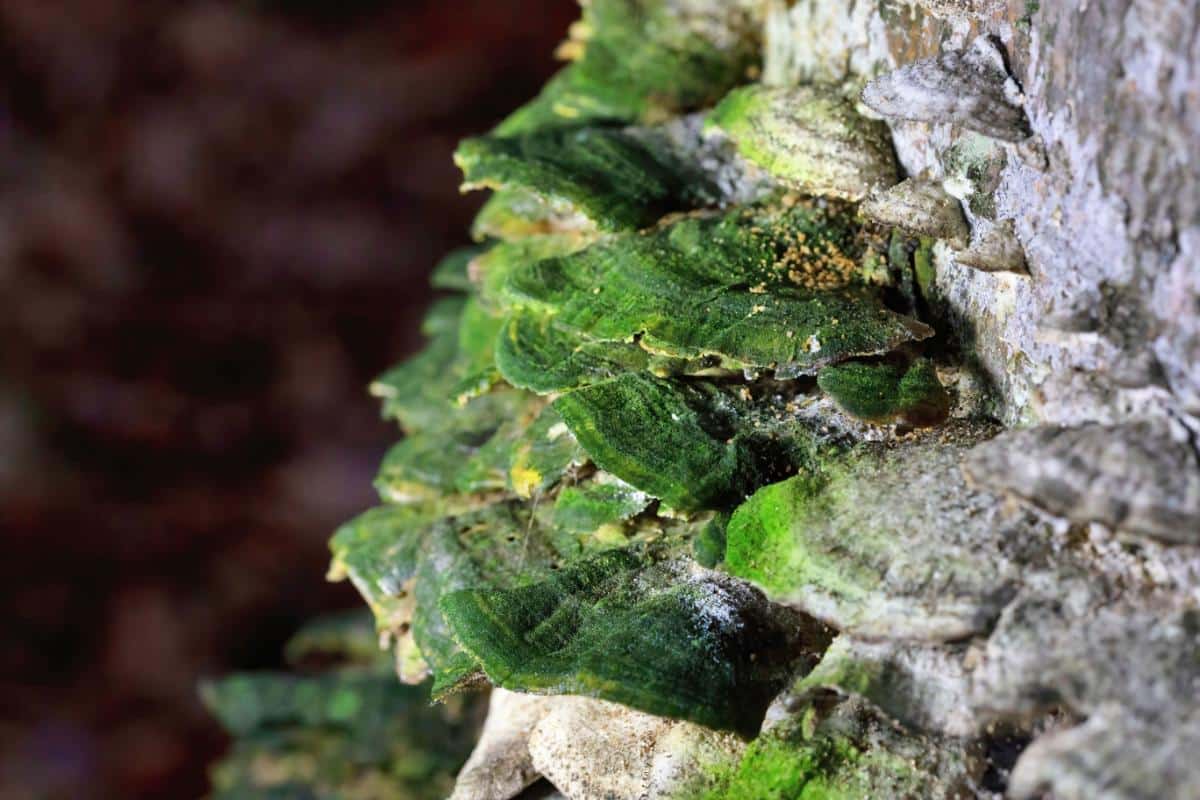






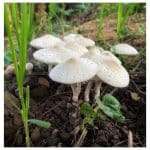
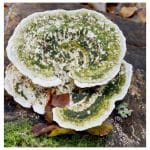
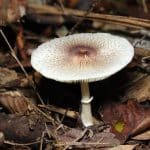
Leave a Reply